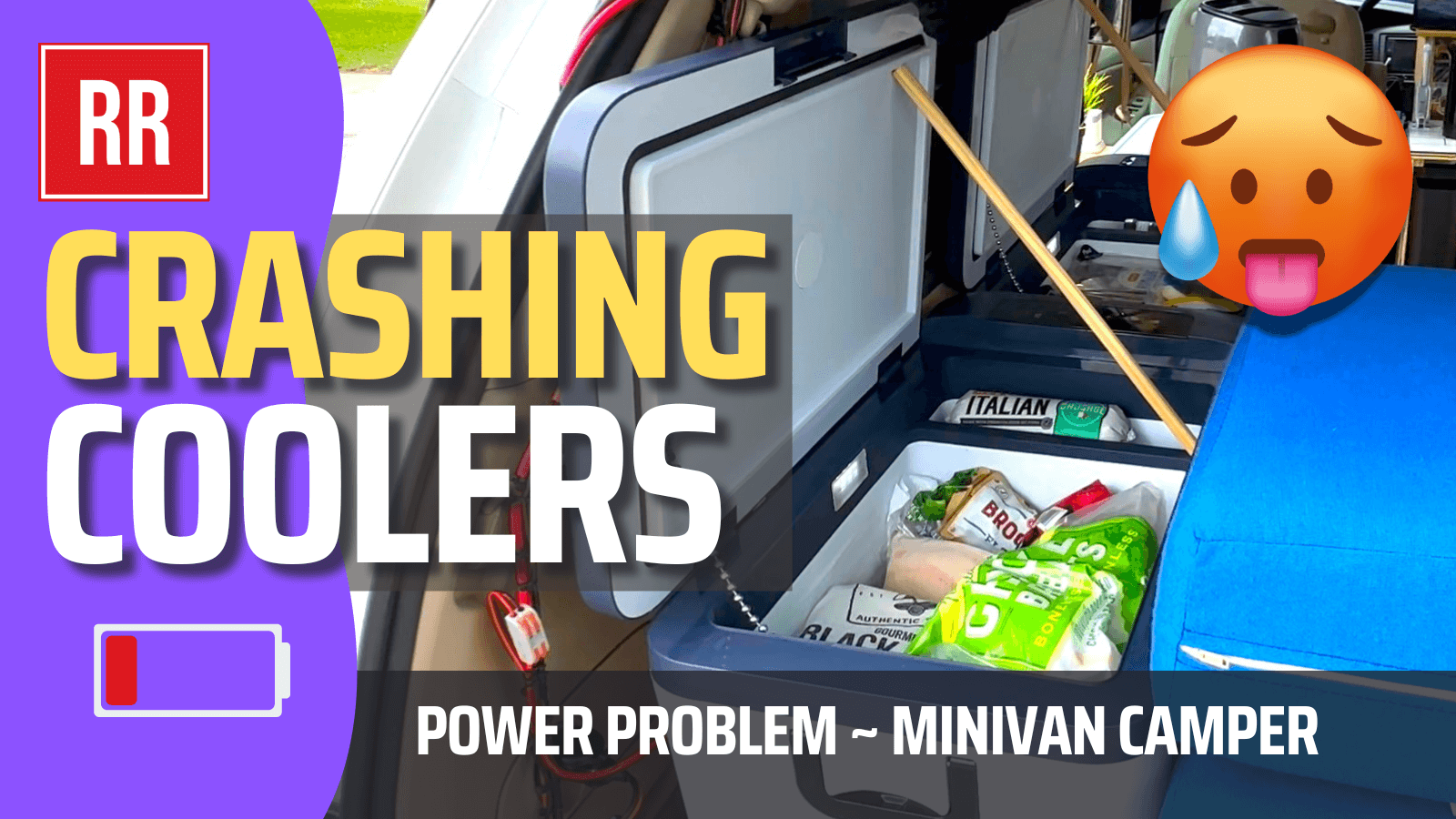Crashing Coolers and Power Problems in The Ultimate DIY Minivan Camper


Another day, another challenge on the road. This time it was me stuck troubleshooting a problem that caught me off-guard during what should have been a relaxing journey. I was heading out west from Texas to Arizona with the goal of meeting Bob Wells from the CheapRVLiving YouTube channel. He had reached out to me for an interview and a tour of my minivan camper conversion, which was a huge deal for me. Afterward, I planned to spend a few weeks in the mountains and maybe even head to the Grand Canyon. But instead of smooth sailing, I ran into a string of technical issues that now have me rethinking some key aspects of my setup.
Links to materials, products and gear featured in this video
Let me walk you through how things started to unravel. My trip began with stocking up on groceries—bulk frozen chicken, salmon, veggies, yogurt, milk, the whole works. I packed it all into my portable 12-volt fridge and separate portable 12-volt freezer - both powered by a 2000 watt-hour Bluetti-brand power station. I was feeling good about being prepared for the next few weeks. But just a few hours into the drive, an annoying beeping sound started. You know that high-pitched noise a smoke alarm makes when the battery’s low? It was like that, but I have a 10-year lithium battery I'm my smoke detector - so it was something else. I also thought it could be my carbon monoxide detector acting up. Of course I had to investigate... but the beeping wasn't too loud so I kept driving for now.
I have 300 watts of solar on the roof and I have a 1,000 watt Renogy-brand inverter that I use to charge my Bluetti as needed. While driving, I use Bluetooth mobile apps to track the temperature in both the fridge and freezer, monitor the amount of solar power coming in and even see the wattage being pulled by different appliances. It’s a pretty slick setup when it’s all working as it should.
But during this trip, my Renogy inverter decided it didn’t want to cooperate. It stopped supplying power to my Bluetti power station, even though it was turned on and should have been pulling up to 470 watts from the main car battery. Worse yet, my fridge and freezer were pulling way more power than they usually do—around 85 to 90 watts, when normally, they average about 30 to 35 watts combined. This uptick in power consumption was a bad sign and I knew I had a bigger problem on my hands.
I pulled over at a rest area in Corsicana, Texas to troubleshoot the issue. After a few attempts at plugging and unplugging cords and testing devices, I found that the power problem wasn’t with the inverter itself. The real issue was that one of the power cords running to the Bluetti lost its connection. It must’ve vibrated loose over the course of the drive. A simple fix, but getting to it meant unloading a ton of stuff from the van and contorting myself in weird positions to reach everything. Not exactly a fun part of van life.
After replugging the cord securely, I thought the problem was solved. But after driving another 100 miles, things took a turn for the worse. It was sweltering outside—105°F—and the fridge and freezer continued to overwork themselves. I decided to stop at a motel for the night to give everything a break. By this point, the coolers were struggling to keep everything at temperature. The fridge was at 42°F, and the freezer was at 9°F, which was borderline unsafe for the food I’d stocked up on.
I spent part of the night in the parking lot with the car running - to use the inverter to charge the power station. When I finally went to sleep, I accidentaly left the inverter on. The next morning, I walked out to a loud alarm coming from the Renogy inverter—it had been on all night. Luckily, the car started, but all my frozen and refrigerated food? Gone. I didn’t want to take any chances, so I threw it all out: three to four weeks’ worth of groceries gone in an instant.
At that point, I knew I had to make some serious adjustments. Should I move the fridge and freezer to get better ventilation? Do I need more solar power, an extra battery or even a small generator? What about installing a high-output alternator so my car can handle the power load? These questions kept piling up in my mind and I’m still not sure which route I’ll take. It’s a lot to consider and I don’t want to rush into anything expensive without giving it proper thought.
In the end, I did meet up with Bob Wells and the interview went off without a hitch. But the power issues persisted, even on my return trip. The inverter started acting up again, this time due to low voltage from my starter battery. I’ve since learned that I probably do need a high-output alternator and a “big three” wiring upgrade if I want to use the inverter with my current setup.
So what did I learn from all this? Well, for one, I won’t be running appliances overnight in a hot, unventilated van anymore. Lesson learned there. I’m also going to seriously consider overhauling my power setup with some new gear. But for now, I’m taking a break to process it all before making any big changes.
And in case you were wondering, that annoying beeping sound was the CO2 alarm. I replaced the battery, and the beeping stopped. So at least that’s one thing I fixed!
Until next time...